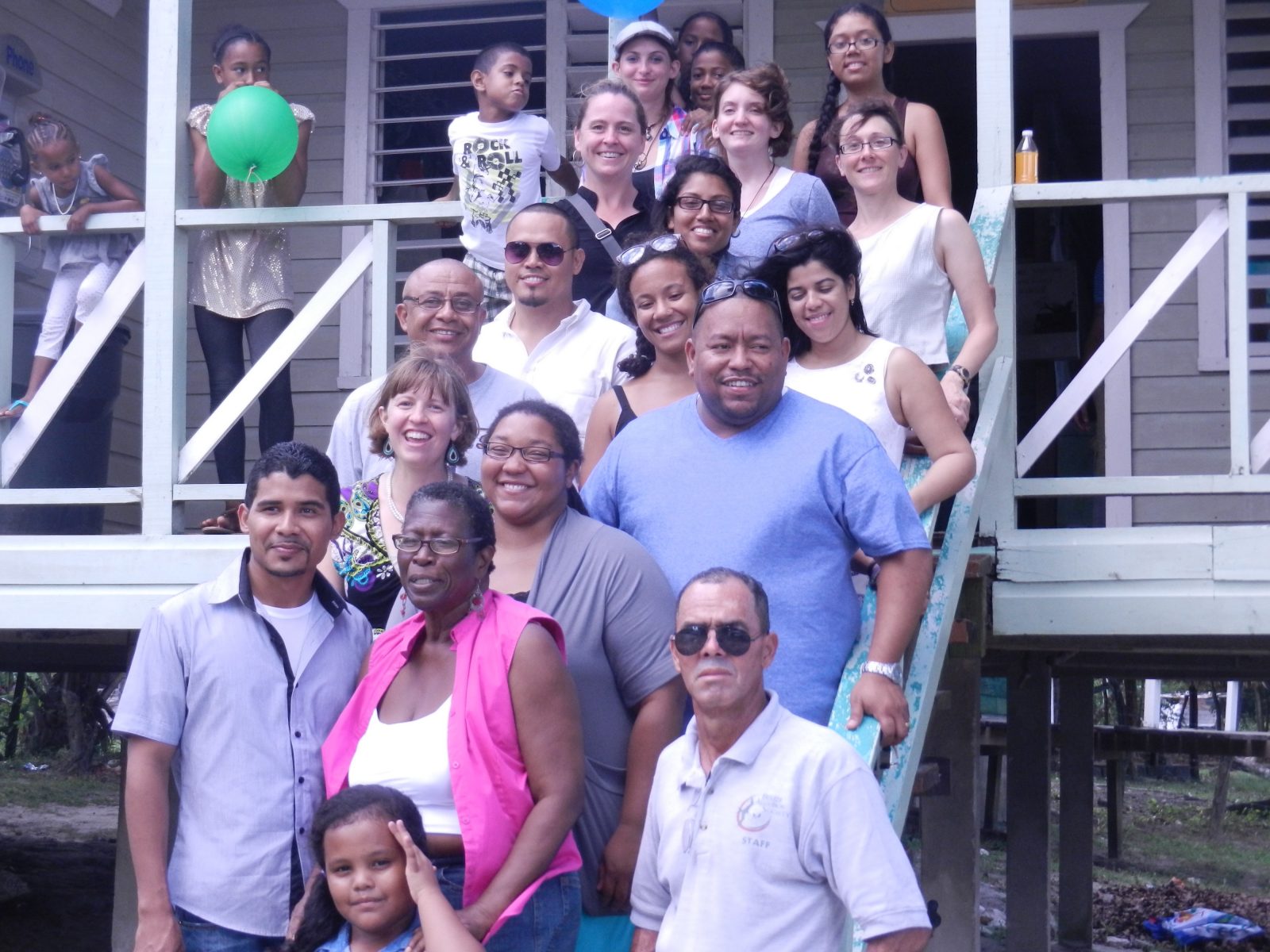
Dr. Alicia McGill, Lisa Withers, Hannah Scruggs and research partners at open house
Public History professor Alicia McGill has been very busy this summer. After receiving a Faculty Research and Professional Development grant to pilot the first NC State University international public history student research practicum, McGill and two Public History students, Hannah Scruggs and Lisa Withers, set off to Belize to collect ethnographic and archival data in the village of Crooked Tree – a community rich in history and vibrant cultural heritage.
Welcome to Crooked Tree Village
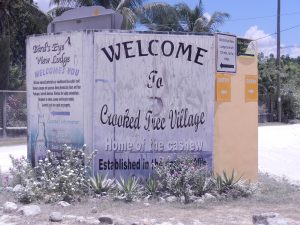
Dr. Alicia McGill is no stranger to Crooked Tree. Her research focuses on community engagement with heritage and how historical narratives are promoted through public venues in Belize. She has been visiting this historically rich village since 2005, when she was a graduate student herself.
Crooked Tree lies in North Central Belize – less than an hour from the Caribbean coast – on an island surrounded by seasonal lagoons. One of the earliest villages in Belize, Crooked Tree was initially established as a series of logging camps that housed British colonists and enslaved Africans. It is now home to roughly 1000 people – descendants of African and European peoples who became known as Belizean Kriol. Most Crooked Tree residents identify as ethnically Kriol, even though many have diverse ethnic backgrounds.
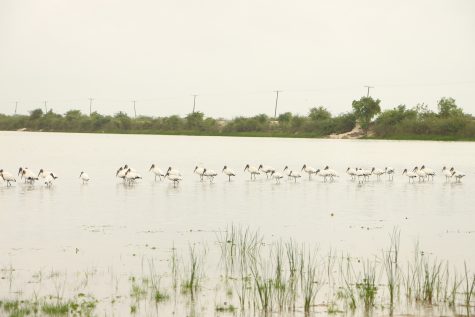
Because of a nearby Maya archaeological site (Chau Hiix, pronounced “chow heesh”) and a complex wetlands environment and Wildlife Sanctuary (the best birding destination in Belize), Crooked Tree is also a popular tourism destination
During her research, McGill discovered that Kriol history was rarely being institutionally documented or incorporated into educational curricula. It was being overshadowed by the state programs’ focus on Mayan settlements throughout Belize.
“Kriol people were concerned about losses of cultural knowledge .”
– Alicia McGill
Dr. McGill wanted to help address this issue by putting together a Kriol community history exhibit. Themes of the exhibit would combine with themes in McGill’s own previous work.
McGill realized this project could also be a great hands-on experience for grad students. While a “field school” is often required for anthropology majors, it is not a standard in public history. McGill wanted to test the applicability of the field experience for public history students. After a call for applications, she chose Lisa Withers and Hannah Scruggs to work with her. In May 2016, they set off for Belize.
“We lived in very very close quarters. We had a lot of cockroaches, it was crazy hot, lots of mosquitoes. Living in those kind of conditions is not common for history students,” said McGill.
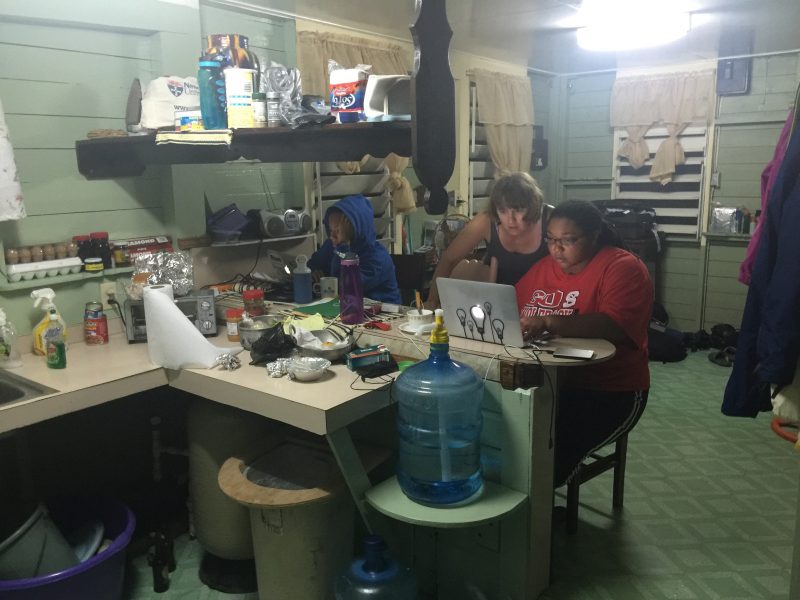
Cultural Immersion and Data Collection in Crooked Tree
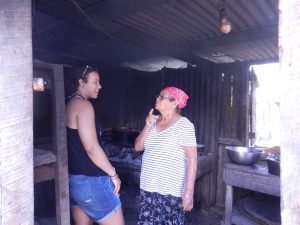
In order to be successful, a research project like this requires intense community engagement that is part research and part orientation. McGill and her students spent the first ten days immersing themselves in the community and Belizean Kriol culture. They took language and cultural lessons with a local historian and, after learning the layout of the village, Withers and McGill identified and met with community elders, business owners, and Belize Audubon Society staff –a partner in the project. Another component of cultural exchange was the inclusion of two Belizean young women from Galen University and two University of New Hampshire undergraduates, who for two weeks worked with them and were a key part of the research team. Finally, they went door to door collecting oral histories from families to discover what people really wanted visitors and youth to know about Crooked Tree.
Said McGill, “I was really impressed with how fast Hannah and Lisa picked up Kriol language and settled in with talking to people they had never met before.”
McGill and her students did more than just talk to people, however. They also sat in on a council meeting, cheered on players at a cricket match, and attended church services.
And, because Crooked Tree is home to the cashew, they of course learned all about cashew processing.

Getting to Work on Individual Projects
It was important to Dr. McGill that “Scruggs and Withers have their own product that they focused on,” and so the team split up.

Scruggs, whose background includes a community oral history project with AmeriCorps, focused on education. She visited middle school classrooms in the Crooked Tree Government School and nearby Biscayne Government School. She developed a teachers’ guide for the exhibit and collected oral histories, folk tales, and drawings from the students. She also visited archives and collected photos and news stories about Crooked Tree and Biscayne from the past 100 years.
Withers, whose background includes museum work and installation, focused on curating the exhibit. After collecting and compiling data, she designed 30 panels based on what they learned over the entire period. The panels highlighted historical aspects of the village, cultural traditions, community activities, and voices of the youth. McGill and archaeology colleague Eleanor Harrison-Buck (University of New Hampshire) created panels focused on the regional history of education, Maya archaeology, and colonial history.
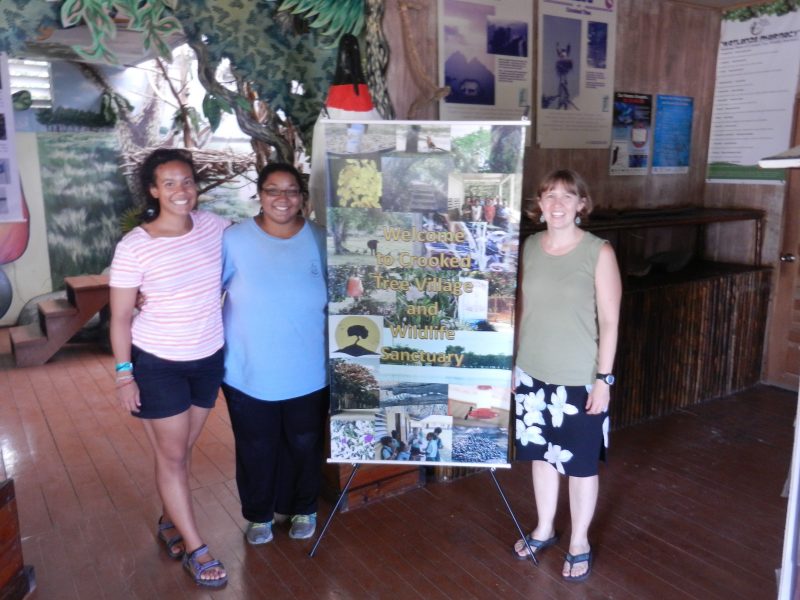
Due to its location and the fact it is a primary tourist destination open seven days a week, The Crooked Tree Wildlife Sanctuary Visitor Center was determined to be the most obvious space to house the exhibit. Following installation of the panels on four walls of the Center, an open house was scheduled for the community so they could see the final product and give feedback.
A Huge Turnout at Open House
The team worked hard to promote the open house and all that hard work paid off.
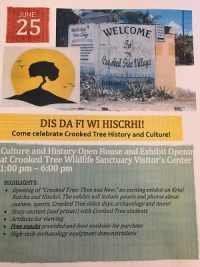
Over 100 people attended including a former and incoming village chairman as well as the Director of the Belize Institute for Social and Cultural Research.
Attendees of the exhibit open house were treated to delicious local foods as they admired the panels, watched DVDs of community activities, purchased cashew products, participated in a trivia contest, and voted on a poster project in which children wrote and created art about why they love Crooked Tree. Prizewinners won NC State gear, of course!
Feedback indicated that villagers strongly connected with the informational materials. Here were their family members, their industries,and their folk tales finally being highlighted on video and print – and at a public event no less. They were also both surprised and delighted to learn that the exhibit was permanent. Not only could they come back and enjoy it but it would enable tourists to learn more about their community. Visitors to shops and restaurants could discover that Belizean heritage is about far more than just Mayan archaeological sites.
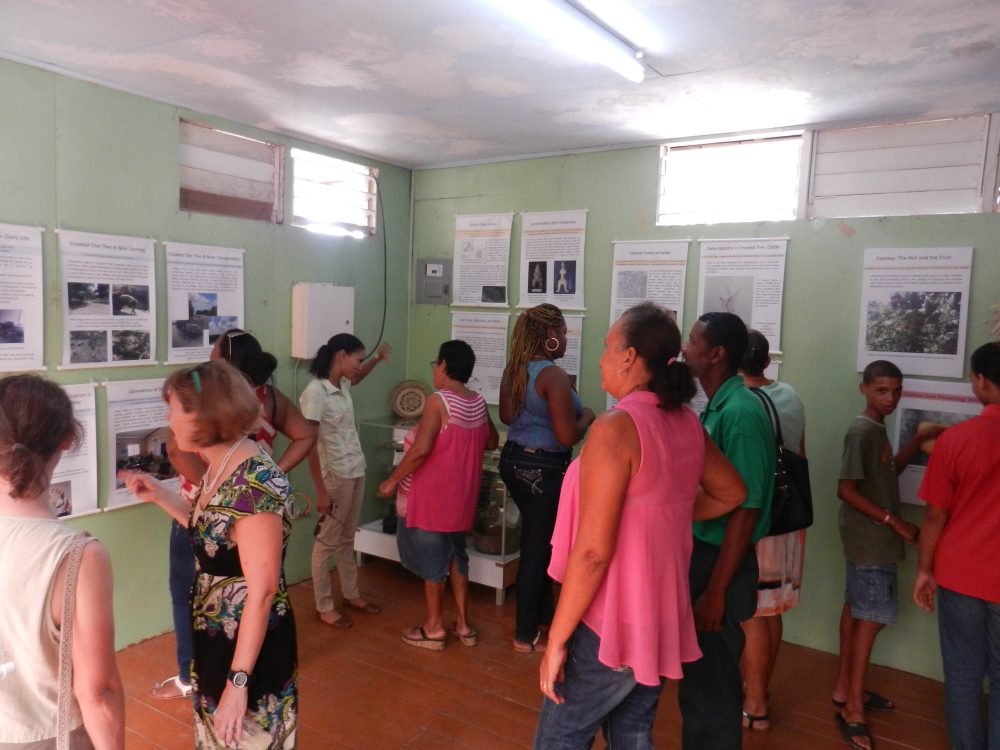
The Belize Archaeology and Anthropology Symposium
After their work was done in Crooked Tree, Dr. McGill and her students co-presented their research at the Belize Archaeology and Anthropology Symposium – an annual week-long conference in which foreign and Belizean researchers publicly present their research.
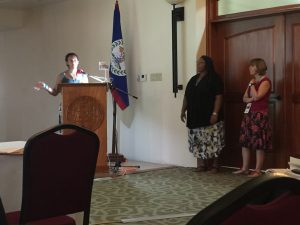
As Dr. McGill explains, “One of my interests in doing this project was I wanted to test the applicability of the field experience for our public history students and particularly the international field experience and so that’s what the paper we gave at the Symposium focused on.”
Because Lisa and Hannah had done so much of the work, she wanted them to give part of the presentation.
The capstone of the event occurred on the last day when the Director of the Institute for Social and Cultural Research asked McGill if she would talk to the media. McGill happily complied and was delighted to find out the interview would be featured on the 6:30 news that evening.
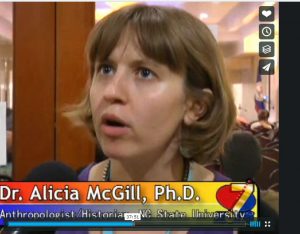
“I made sure to tell all my Crooked Tree friends/colleagues to watch the evening news that night!” McGill laughed.
Listen to Dr. McGill’s interview at the 37:08 mark or read the transcript.
Future Public History International Field Projects
It is Dr. McGill’s hope that there will be future projects which will involve larger groups of graduate and undergraduate students traveling to Belize.
“I’m quite proud of what we accomplished,” said Dr. McGill. “Hannah and Lisa’s learning curve was very steep and they ascended that curve quite quickly.”